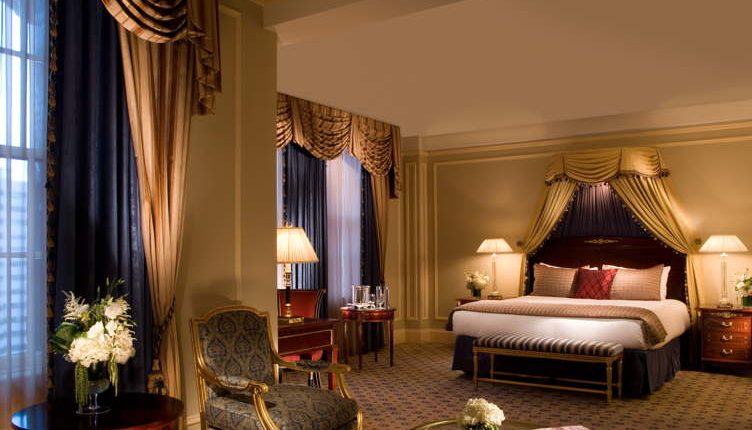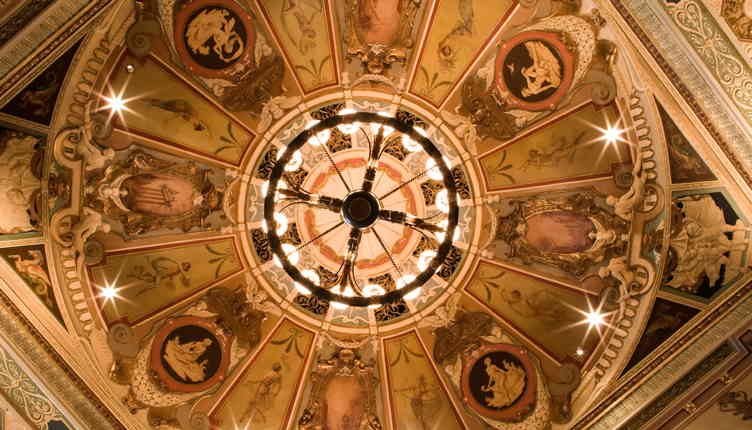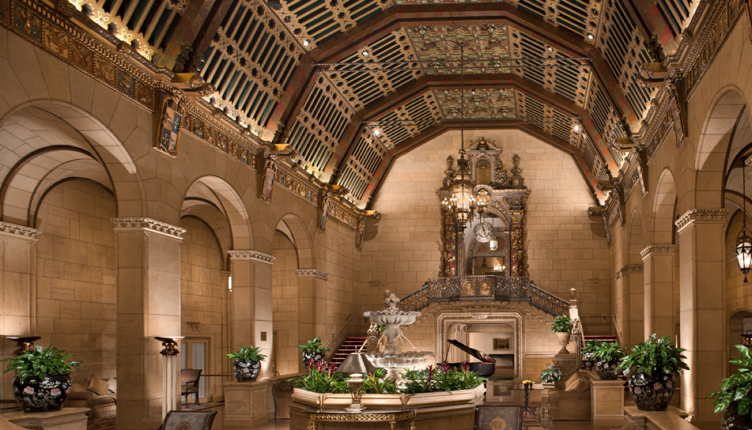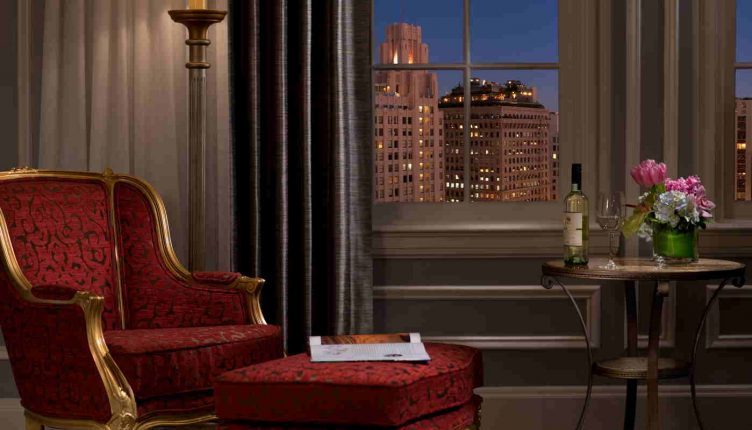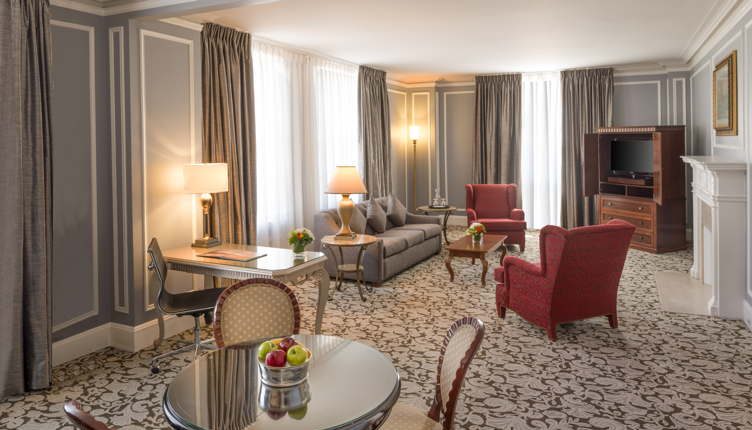
Photo Credit: Millennium Biltmore
There’s something about Los Angeles’ Millennium Biltmore Hotel that reminds us of the fictional Overlook Hotel, the setting for Stanley Kubrick‘s 1980 masterpiece, “The Shining” (which actually exists in reality as The Stanley Hotel in Estes Park, Colorado). Both are luxe and lavish with Hollywood pedigrees…and both, it’s safe to say, are supremely haunted.
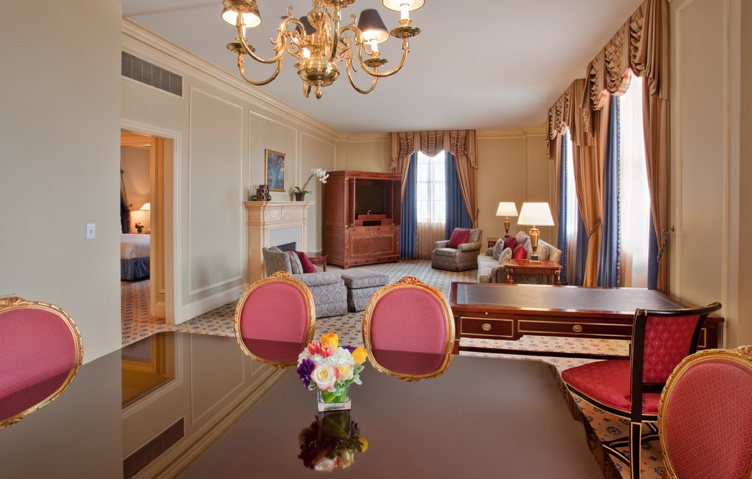
Photo Credit: Millennium Biltmore
But before we get to the latter, let’s set the scene for our own Hollywood story, and share why this iconic hotel is actually one of the most important cultural landmarks in Hollywood (despite being located in downtown L.A.) Some 3,000 guests—including some of the biggest names in Hollywood, such as studio head Jack Warner, Cecil B. DeMille, Mary Pickford and then-starlet Myrna Loy—descended upon what was first known as the Los Angeles Biltmore on Oct. 2, 1923, one night after it officially opened, for a seven-course dinner, with music provided by seven orchestras that spanned its glittering ballrooms. And this is where it all began.
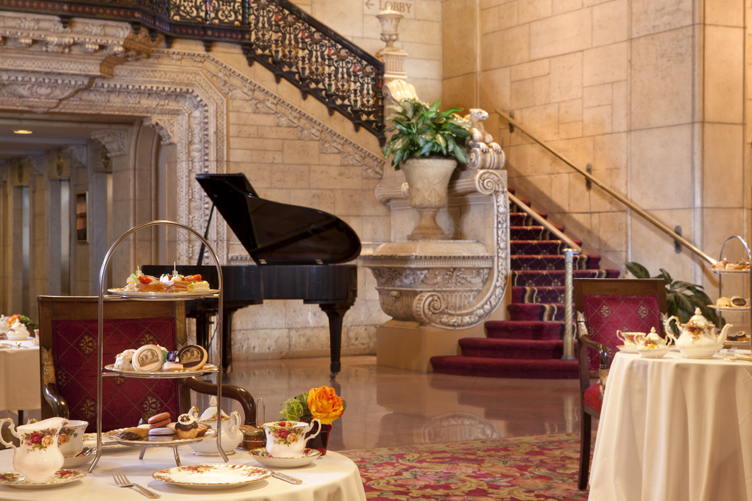
Photo Credit: Millennium Biltmore
Names that defined old Hollywood, from Gloria Swanson to Theda Bara, hung out here, imbibing and partying in the Gold Room, which served as a speakeasy during the Prohibition era, complete with a hidden door that helped revelers avoid the police with an escape onto Olive Street. (The door is still there, by the way—it connects to a room that has a wooden countertop, coat hooks and bathroom, though its Olive Street exit has been sealed in brick.) The Presidential Suite—favored by the likes of six U. S. presidents, royalty, and notorious gangsters like Bugsy Siegel and Al Capone—still has a recessed spot to hide liquor, which remained illegal in most of L.A. until 1933.
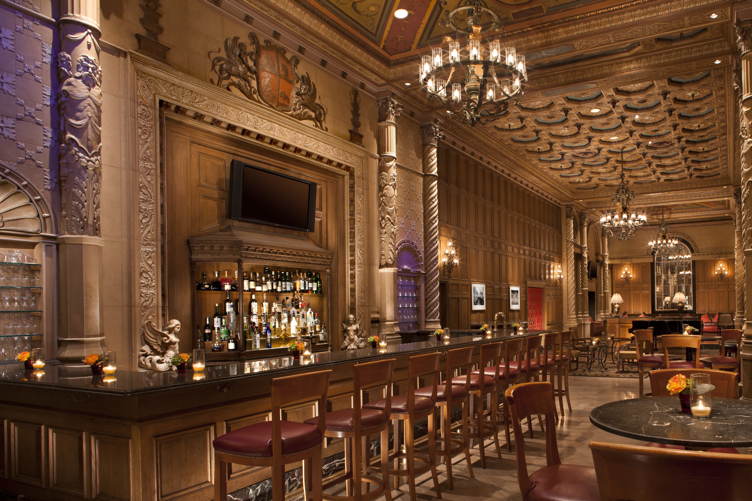
Photo Credit: Millennium Biltmore
The Biltmore’s allure was strong for the studios and starlets of vintage Hollywood. Within its first year, it was already a shooting location for DeMille’s 1924 film, “Triumph.” It was also featured in films and shows that nod to the past, including “Ocean’s 11” (1960), “The Sting” (1973), “Chinatown” (1974), and “Bugsy” (1991) as well as “Mad Men.” The hotel also hosted the opening party for the iconic Grauman’s Chinese Theatre (now known as the TCL Chinese Theatre); is where the Academy of Motion Picture Arts and Sciences (AMPAS) was born (in 1927 at a gathering in the hotel’s Crystal Ballroom); and is allegedly where MGM’s great production designer Cedric Gibbons is said to have sketched the first Oscar statue (on one of the hotel’s linen napkins).
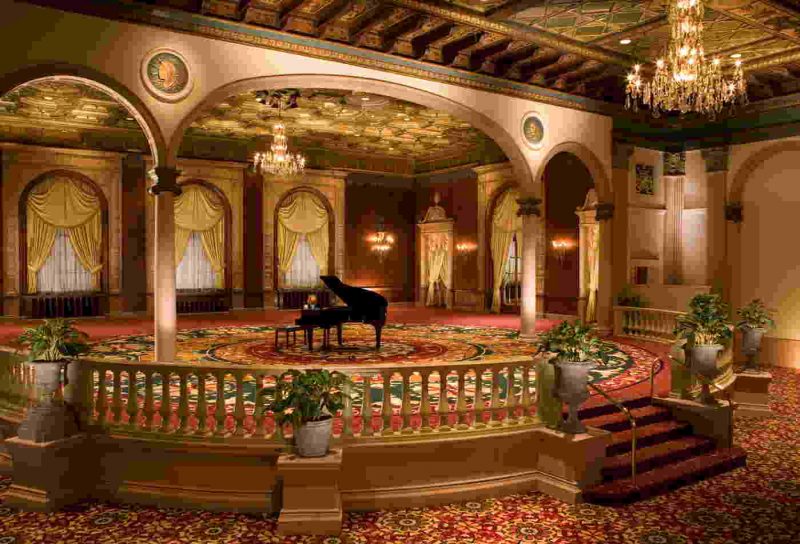
Photo Credit: Millennium Biltmore
Fittingly, it’s also where the Academy Awards was actually hosted—in 1928, 1935-39 and 1941-42. If only these walls could talk—the stars the hotel has seen walk through its hallowed halls is staggering: Clark Gable, Spencer Tracy, Jimmy Stewart and Gary Cooper all won their Oscars here, as did Bette Davis, Joan Fontaine, Ginger Rogers and Claudette Colbert. The Biltmore is where “It Happened One Night” (1934) set a record by sweeping the Oscars’ top honors, including Best Picture, Best Director, Best Screenplay, Best Actor and Best Actress. Colbert was so convinced she wouldn’t win that she went to Union Station to board a train and had to be brought back to the Biltmore to accept her award.
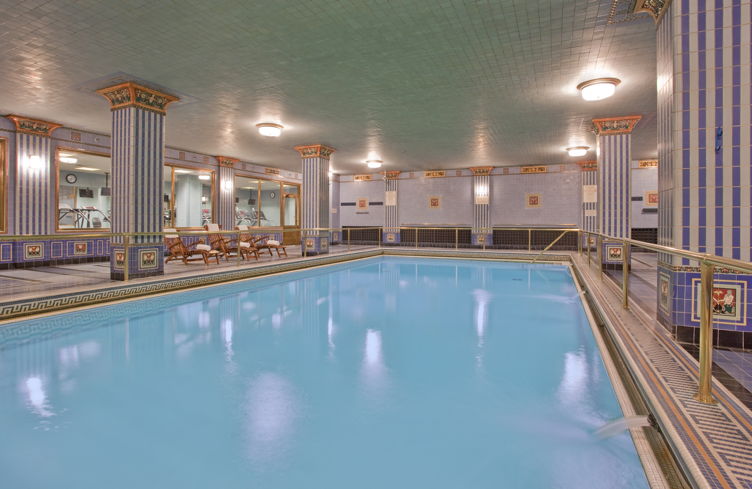
Now, needless to say, a place with this much pedigree, that’s this tied to Hollywood, would have its share of Hollywood ghosts. And it really, really does. The property is beautiful, no doubt, but also a little wistful, as if the hotel itself wanted to step back into time, into its glorious, golden, star-studded heyday. There’s said to be a little boy running around the 10th floor (which also serves as the Club Lounge); a nurse ghost on the second floor; and a little girl on the ninth (though not, thankfully, twins a la “The Shining”). We even had our own brush with the supernatural on the 5th floor (but that’s better left unsaid for now). Most notably, especially when discussing old Hollywood, the ghost of Elizabeth Short on the 10th and 11th floors, as well as the lobby. Short, as you may remember, is the given name of the woman known as the Black Dahlia—perhaps the most iconic unsolved murder mystery in Hollywood.
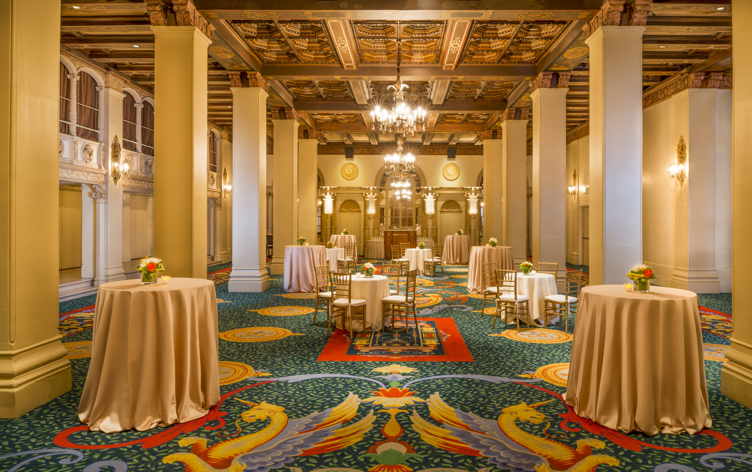
Ghosts aside, the Millennium Biltmore is a place where the past meets the present. As the hotel prepares to celebrate its 100th anniversary, guests can still feel that old Hollywood glamour from the moment they enter the glittering, golden lobby. This is opulence at its finest: full of frescos and murals, carved marble fountains and columns, crystal chandeliers, and embroidered tapestries. A Roman-style pool only adds to its allure. That the 683 guestrooms are newly refurbished and have all the modern amenities one expects from a luxury hotel—including high-speed WiFi, iPod docking systems, a 24-hour business center, a fitness center and an elegant Club Lounge overlooking the City of Angels—only sweetens the deal (because while you want to enjoy the timelessness of the Millennium, you want to be able to do so comfortably, right?).

Photo Credit: Millennium Biltmore
To sum it all up, if you’re an old Hollywood aficionado, this hotel is a must. It’s a cultural landmark—and anyone who’s involved in the film community (and even those who are not) will take home a piece of its spirit. Just make sure to be aware that there are actual spirits on the property. But don’t worry—they don’t want to bring you harm. They just want to be remembered. Luckily, this is a perfect spot to ensure just that.
The Millennium Biltmore is located at 506 S Grand Ave, Los Angeles, CA 90071







